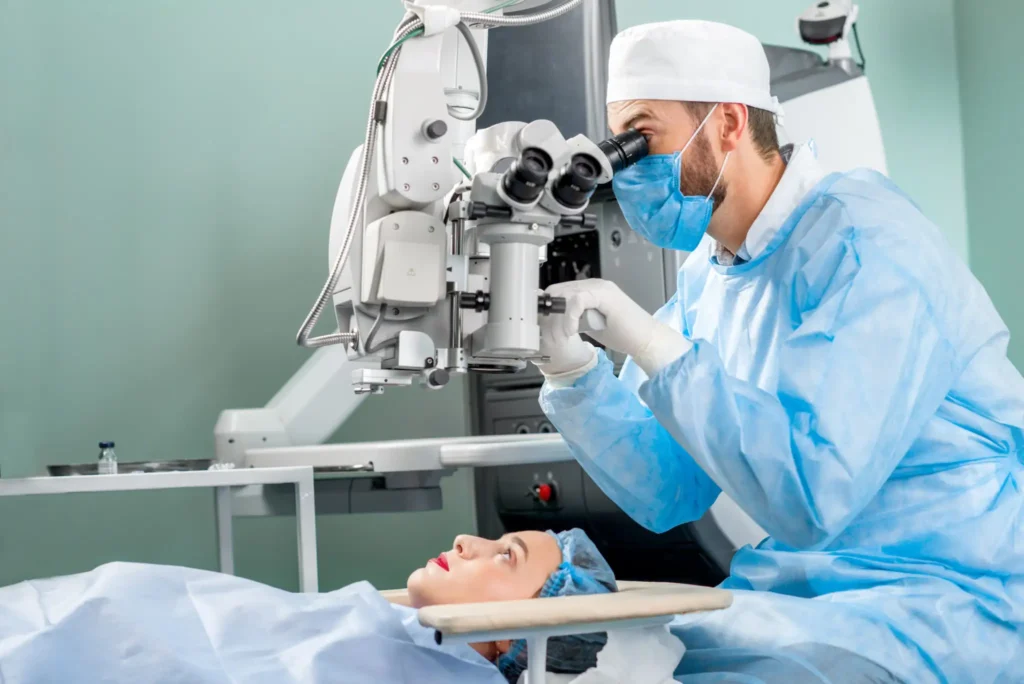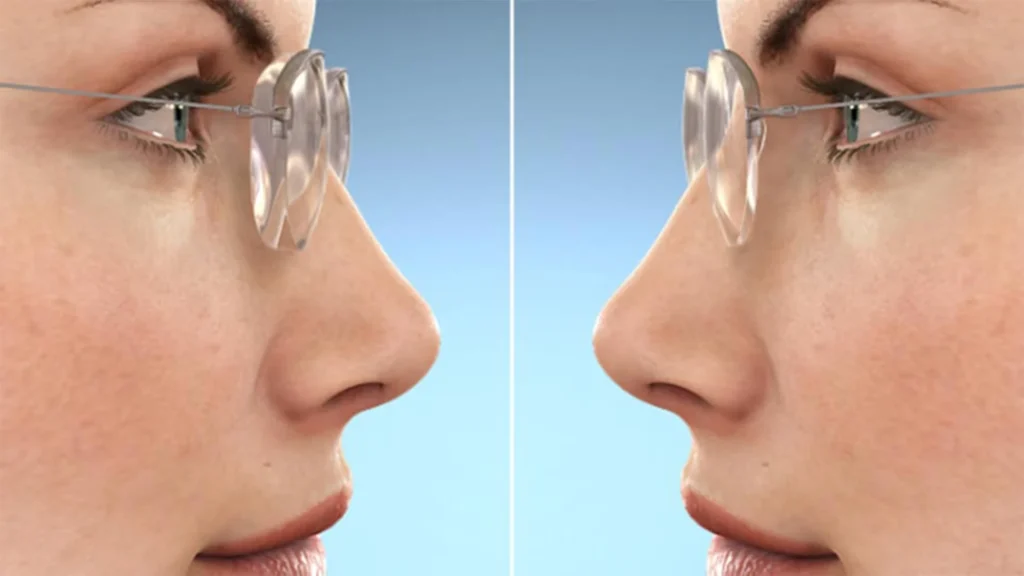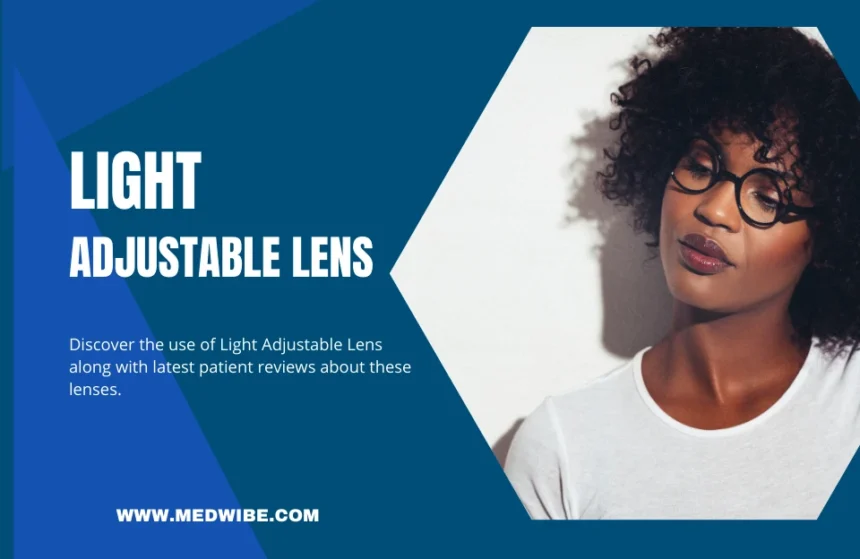Key Points
- The Light Adjustable Lens (LAL) is a groundbreaking intraocular lens implant that allows for post-surgical adjustment using UV light, enabling precise customization of vision correction after cataract surgery.
- LAL can be customized after cataract surgery to fine-tune vision correction using UV light.
- Ideal for patients with cataracts needing surgery, having at least 0.75 diopters of corneal astigmatism, and without preexisting macular disease
- Not suitable for individuals sensitive to UV light, on harmful medications for the retina, with a history of herpes eye infection, or unable to follow postoperative care instructions
- These lenses are particularly effective for correcting astigmatism, offering precise adjustment capabilities post-implantation
- Patients must be prepared for a significant commitment to post-surgery care, including multiple follow-up visits for lens adjustments.
What Is a Light Adjustable Lens?
A Light Adjustable Lens is a revolutionary type of intraocular lens (IOL) implanted into the eye during cataract surgery or as part of a refractive lens exchange procedure. What sets LALs apart is their ability to be precisely adjusted after implantation, using specialized light treatments. This means your eye surgeon can fine-tune your vision to your needs post-surgery, ensuring optimal outcomes.
Advantages of Light Adjustable Lens

LALs come with a plethora of benefits that make them an attractive option for those looking to correct their vision:
Customizable Vision Correction
Post-implantation adjustments allow for customization of vision to a degree that’s not possible with traditional lenses.
Reduced Need for Glasses
Many patients find that they no longer need glasses for most activities after their LALs have been adjusted.
High Precision
Adjustments can correct minor refractive errors, providing clearer, sharper vision.
Drawbacks of Light Adjustable Lens
While the advantages are compelling, it’s important to consider a few drawbacks:
High Cost
The adjustment process comes with a very high cost.
UV Light Sensitivity
Patients must wear special UV-protective glasses until the final adjustment is locked in.
Not Suitable for Everyone
Certain eye conditions may prevent some individuals from being good candidates for LALs.
Discover the pros and cons of Vivity Lens on any of the healthcare blogs in USA.
Light Adjustable Lens – Patient Reviews
Patient testimonials often highlight the life-changing clarity of vision achieved with LALs. Many express satisfaction with the process, noting the remarkable improvement in their daily lives, from driving to reading fine print without needing additional corrective lenses.
Implantation of Light Adjustable Lens (LAL)

The implantation procedure is similar to standard cataract surgery. The eye’s natural lens is replaced with the LAL in a process that typically takes about 15 minutes. Patients undergo light treatments post-surgery to adjust the lens, a non-invasive procedure that fine-tunes vision to precise specifications.
Light Adjustable Lens Uses
Here are the main uses of Light Adjustable Lenses:
- LALs are primarily used to replace the natural eye lens during cataract surgery. When the natural lens becomes cloudy due to cataracts, it is removed and replaced with an intraocular lens (IOL), in this case, a Light Adjustable Lens.
- LALs can be adjusted post-implantation to correct myopia, Hyperopia, Astigmatism, etc, allowing patients to see objects more clearly.
- Patients who have undergone previous eye surgeries, including LASIK or traditional cataract surgery, and are seeking further improvement in their vision may benefit from the implantation of LALs.
- The most notable use of LALs is their ability to be customized after implantation. LALs can be fine-tuned using specialized light treatments to achieve the desired visual outcome.
Read More : Uses of Trifocal lenses in daily life activities.
Are Light Adjustable Lens Worth It?
For many, the ability to customize vision post-surgery is a game-changer. The technology behind LALs promises clearer vision and a glasses-free life, making it an appealing option for those eligible.
Who Qualifies For Light Adjustable Lens?
- LAL is designed for individuals undergoing cataract surgery seeking customizable vision correction.
- It is suitable for patients with at least 0.75 diopters of corneal astigmatism before surgery.
- Candidates should not have any preexisting macular disease.
- It is not ideal for individuals taking medications that increase UV sensitivity
- Beneficial for individuals with specific refractive errors seeking precise outcomes
Are Anti Fatigue lenses helpful in reducing Eye Fatigue? Learn now.
Light Adjustable Lens Vs Multifocal Lens

Following are some key differences between Adjustable Lens and Multifocal Lens:
Customization
LALs offer post-implantation adjustability, allowing for personalized vision correction. Multifocal lenses provide a fixed correction based on pre-surgery measurements and do not allow for adjustment after implantation.
Vision Correction
LALs are tailored to correct specific refractive errors, providing sharper vision tailored to the patient’s needs. Multifocal lenses aim to restore a range of vision, from near to far, but may come with visual artifacts such as halos.
Suitability
LALs may be more suitable for patients with significant refractive errors looking for precise correction. Multifocal lenses are often chosen by patients seeking to minimize reliance on glasses for reading or distance vision, particularly those with presbyopia.
Light Adjustable Lens Cost
The cost of Light Adjustable Lens (LAL) surgery in the USA varies, with estimates ranging from $2,000 to $3,000 per eye. This cost is generally not covered by insurance and can depend on several factors including location and facility.
Are you suffering with 20/200 vision? Find out ways to treat it in this guide.
FAQs
How Long Does Light Adjustable Lens Last?
Light Adjustable Lenses (LAL) are designed as a permanent vision correction solution. Once the postoperative adjustments are made to optimize vision, the effects are intended to last for the patient’s lifetime, with no need for further adjustments.
Do Light Adjustable Lens work?
Light Adjustable Lenses (LALs) have been shown to work effectively for correcting vision post-cataract surgery, offering a high degree of precision in achieving the desired refractive outcome.
Does the Light Adjustable Lens correct Astigmatism?
Yes, the Light Adjustable Lens (LAL) can correct astigmatism. The LAL, approved for use in patients with corneal astigmatism of at least 0.75 diopters, allows for postoperative adjustments to correct this condition effectively.
What are the contraindications for light-adjustable lenses?
Contraindications for the Light Adjustable Lens include sensitivity to UV light, use of medications harmful to the retina, a history of herpes eye infection or uncontrollable eye movements, and inability to comply with postoperative UV protection and care requirements.




